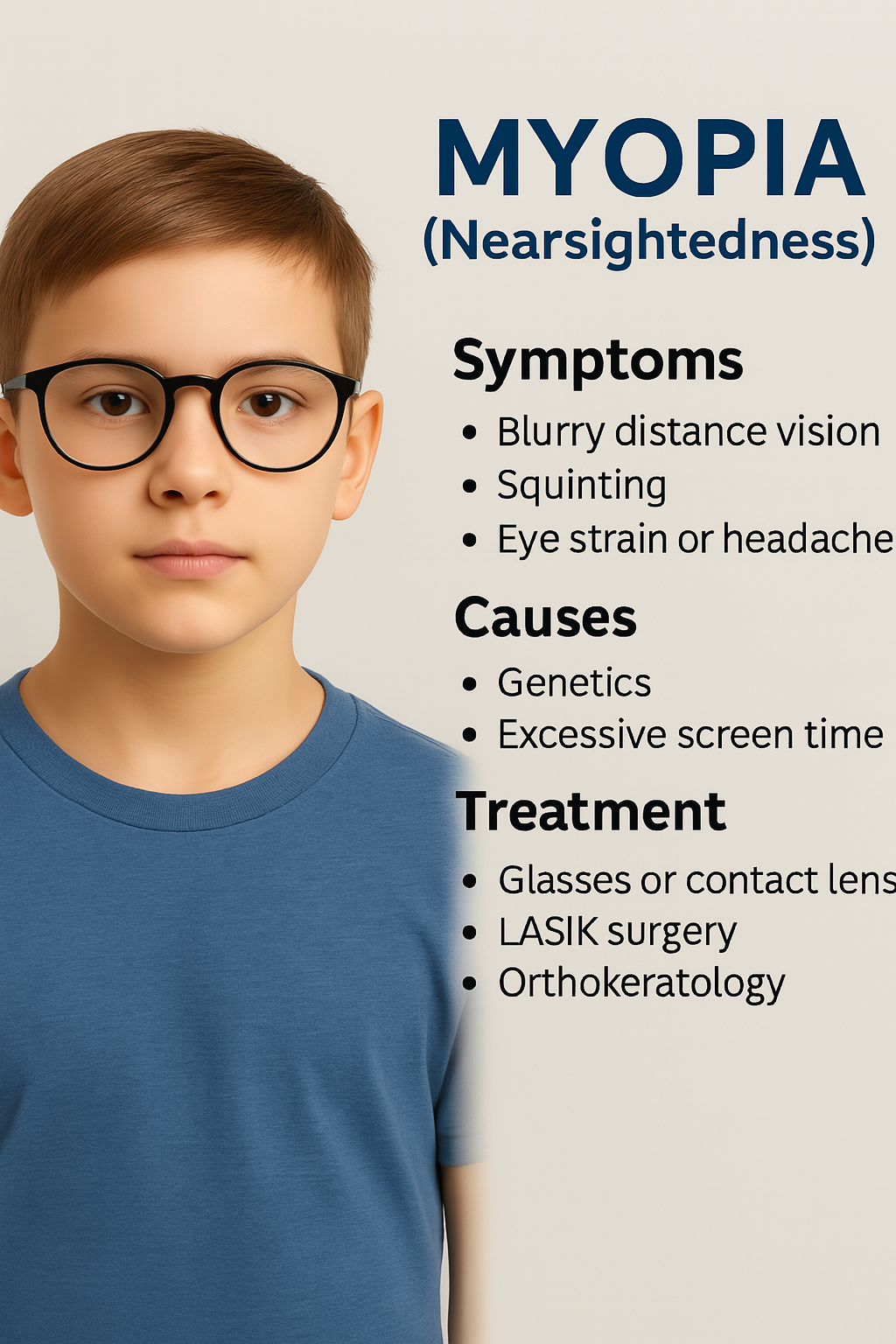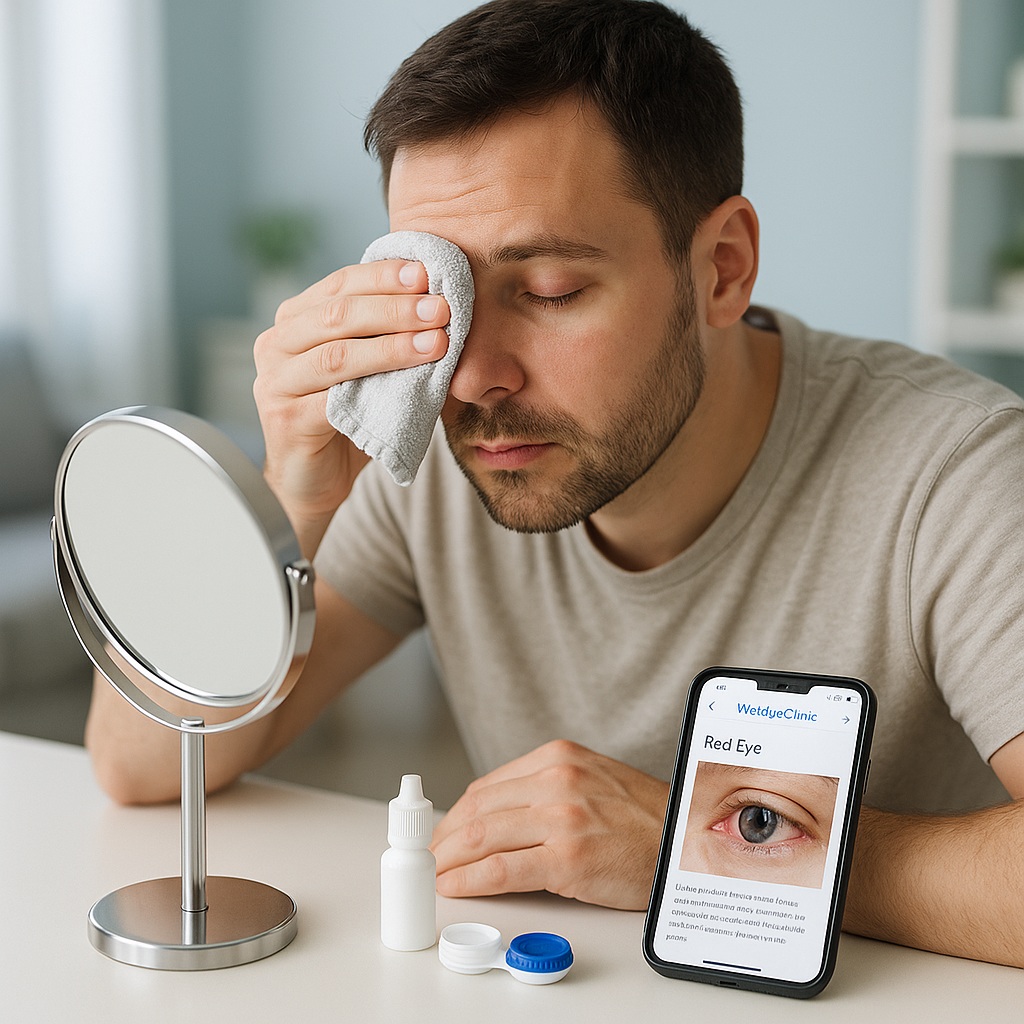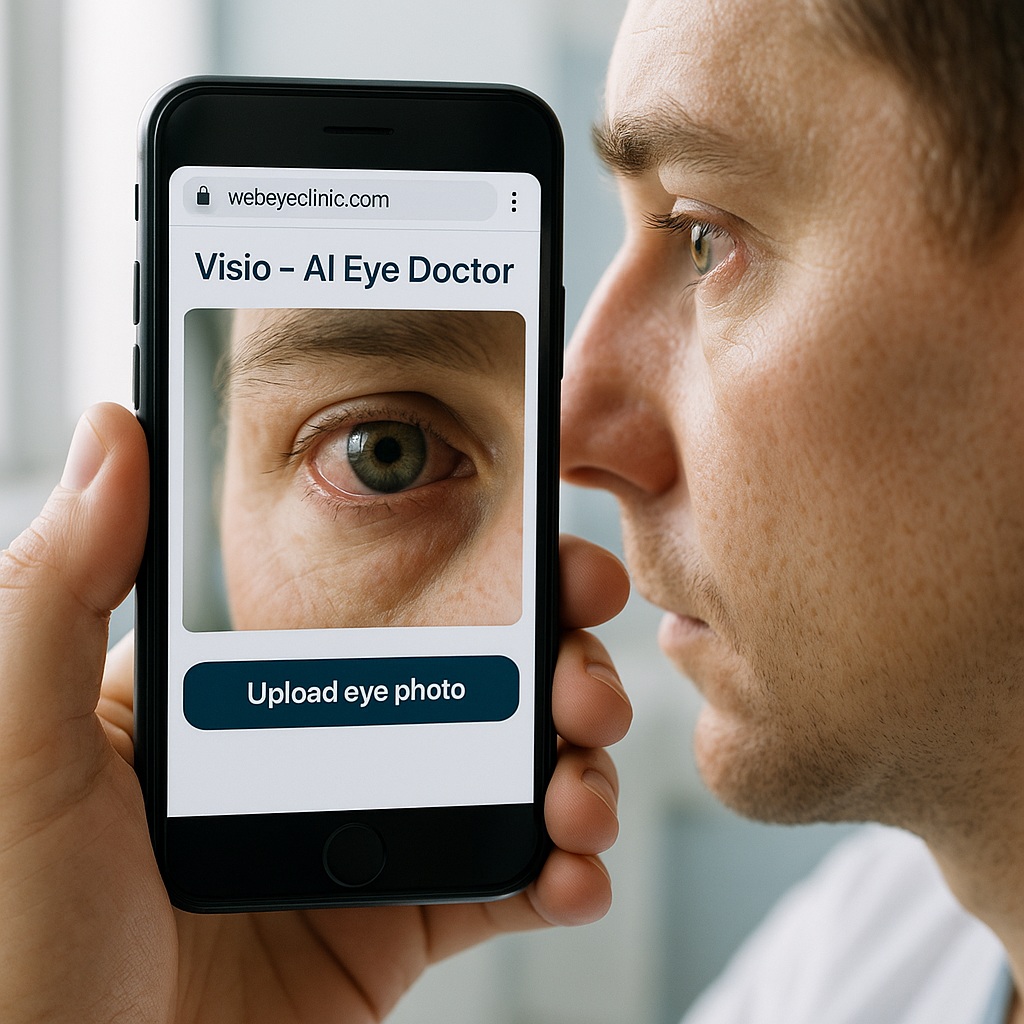Myopia in Children: Causes, Early Signs, and the Best Treatment Options
Published: July 6, 2025
1. Causes of Myopia in Children
Myopia develops when the eye elongates too much front-to-back or when the cornea/lens system focuses light in front of the retina. Key contributors include:
Genetic Factors
- One myopic parent: ~25–30% chance of developing myopia
- Two myopic parents: >60% chance
Environmental & Lifestyle Influences
- Excessive Near Work: Extended reading, screen time, or homework sessions increase accommodative stress.
- Limited Outdoor Time: Less than 2 hours/day outdoors under bright light; natural daylight releases dopamine in the retina, which helps regulate eye growth.
- Urban Living: Higher prevalence in cities, where children spend more time indoors and on near tasks.
Educational Pressures
Intense early schooling and high academic demands can amplify near-work load and reduce outdoor playtime.
2. Early Signs to Watch For
Spotting myopia early allows for prompt intervention. Look for:
- Frequent squinting or blinking
- Holding books or devices very close
- Complaints of blurry distance vision (whiteboard, TV)
- Tilting the head or covering one eye to see clearly
- Eye rubbing, headaches, or eye strain after near work
- Decline in school performance or avoidance of distance-vision tasks
If these persist, schedule a comprehensive eye exam with an optometrist or pediatric ophthalmologist.
3. Best Treatment Options
Beyond standard glasses, these evidence-based strategies can slow progression:
3.1 Spectacle Lenses
- Single-Vision Glasses: Correct refractive error but don’t slow axial growth.
- Myopia-Control Lenses: Peripheral defocus designs that signal the eye to slow elongation.
3.2 Contact Lenses
- Orthokeratology (Ortho-K)
Nightly rigid lenses reshape the cornea temporarily; studies report a 30–50% reduction in axial elongation over two years. - Soft Multifocal Lenses
Concentric zones create clear central vision and peripheral myopic defocus; trials show ~40% slowing of progression.
3.3 Pharmaceutical Intervention
Low-Dose Atropine (0.01–0.05%)
Nightly drops reduce progression by up to 60% with minimal side effects; requires regular monitoring for light sensitivity and near-vision changes.
3.4 Behavioral & Lifestyle Modifications
- Increase Outdoor Activities: Aim for 1–2 hours daily in natural light.
- 20-20-20 Rule: Every 20 minutes, take a 20-second break to look at something 20 feet away.
- Limit Continuous Near Work: Encourage regular breaks and varied focus distances.
4. Tailoring the Approach
Customize treatment based on:
- Age & Degree of Myopia: Younger children and higher prescriptions often benefit from combined therapies.
- Child’s Compliance: Ability to manage drops or contact lenses properly.
- Follow-Up Schedule: Eye exams every 6–12 months to monitor progression and side effects.
Collaboration among parents, eye-care professionals, and schools ensures adherence and timely adjustments.
Conclusion
Myopia in children is increasing, but early detection and a combination of optical, pharmacological, and lifestyle interventions can slow its progression. Regular eye check-ups are essential to tailor treatments and protect your child’s vision for the future.


